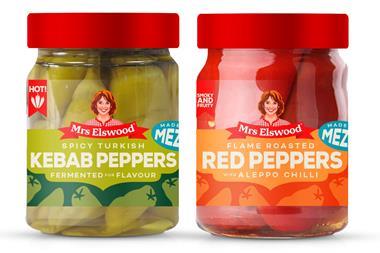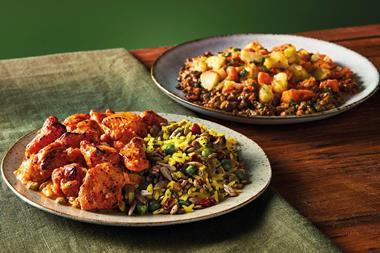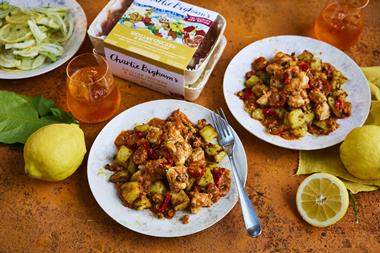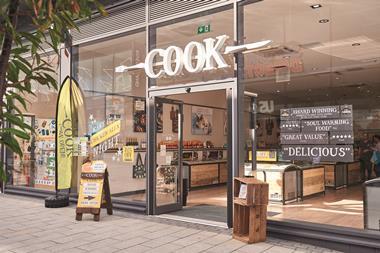Big brands, it's fair to say, are embracing innovation. Heinz will launch 100 lines this year. P&G is looking to roll out NPD every six months. Premier, too, is reinventing itself as an innovator. Health reformulations, brand extensions, organic and premium options. It's an exciting time in grocery.
But there's a flipside. As Tesco's supply chain systems development director Bruno Monteyne told The Grocer last week, some suppliers are launching "meaningless new product development" for the sake of it.
"Innovation can obviously add value, but when it goes too far, is developed simply for the sake of change, it becomes problematic. Manufacturers need to plan their innovation better and think about the impact their new products will have on retailers and consumers."
Will Hayllar agrees. He's an associate director at strategy consultants OC&C, and sees "very poor self-auditing and poor analysis of innovation going on". He cites the use of 'limited-edition' NPD, which is particularly prevalent in confectionery and soft drinks. "This can add value but more often it can be destructive for both retailers and the category itself. There is no thought of long-term category leadership or sustained payback involved. It aims, rather, for a short-term spike in sales. There has to be purpose behind innovation and that purpose should be immediately clear to retailers who trade off the new ideas."
Hayllar has now made it his mission to measure innovation in a more robust way. With his colleague Chris Outram, chairman emeritus of OC&C, the company has devised a methodology to rank the largest branded manufacturers in the UK.
"The studies we see a lot are concerned in the main with volume: who is putting out new products," says Outram. "But very few studies look at the next two years and what happens to that new product. Has it stuck? Even better, has it dramatically reshaped or grown the category? We wanted to measure the staying power of NPD, and its contribution to a company's success."
The result is a £50,000 study that measured NPD over a two-year period at the top 25 revenue-grossing branded food and drink manufacturers. The methodology is essentially a ranking of four measures - new product launches, availability, organic growth rates and share of facings - that have been weighted according to OC&C's estimation of their significance (see boxout for a fuller explanation of the methodology). The lower the ranking in each category, the better.
The study threw up many surprising results, not least the fact that Weetabix - a relatively small, private-equity-based company, came out top. The cereal manufacturer is quite the iconoclast, as it underscores three of the key conclusions of the report.
It turns out that, contrary to the prevailing perception, private equity-owned businesses, with a ranking of 11.8, outperform both publicly owned (12.7) and privately owned (15.2) manufacturers.
"While there are exceptions in this list, the study proves that the majority of private equity-owned companies are at least as interested in growing their businesses as in cost-cutting," says Hayllar.
Bigger companies (with an average score of 15.4) also come out badly against their smaller cousins (11.1).
And companies focused on a small number of categories are better innovators than those with a broad portfolio, the report concludes: the Top 10 ranked food companies typically operate in just 3.3 categories, with Weetabix and Müller typifying that focus and PepsiCo the exception that proves the rule.
But it is the companies at the bottom of the ranking that are most likely to cause controversy. And some of the names, which included OC&C clients, initially puzzled the consultancy. "On first glance, we were surprised at the placing of Premier and Warburtons, for example. In fact we were worried, as it clashed with our impressions of those companies. But with further digging, we were reassured as to the logic and reason behind the rankings."
In the case of Warburtons, the study picked up on the fact that it has enjoyed stunning growth, but this was largely the result of its national rollout and strong branding; the rejuvenation of the Branston brand under Premier fell outside the time period of the study.
OC&C concedes the methodology is not perfect. Although the ranking measures the impact of new product development as a percentage of a brand's facings, it did not measure the actual growth in shelf space or share as a result of innovation, as "we couldn't look back in time" to the facings at the start of the period. Hayllar promises that, as the index develops in future years, "absolutely we would want to be able to do that".
He also concedes that, in assessing NPD over a two-year period, the timing of a launch becomes crucial. If company X launched an ill-thought-out innovation in September 2007, it would stand a greater chance of being on shelf in October that year than an equally poor new product launch by company Y in September 2005.
It is Hayllar's hope, however, that some of the kinks will be ironed out over time. "This study has involved a rigorous collation of information from many sources, including Datamonitor Productscan, report and accounts and storechecks by OC&C," he says.
"But it's a difficult study. We've had to estimate the sales and of course we don't know the margin contribution of these new product launches. It's a series of proxies that you can make on a comparable basis. As it develops we expect the accuracy of our observations to become even more acute.
"Above all our study proves that innovation is a critical driver of growth. A focus on innovation is not the only valid way to run or even grow a business, of course, but the top 10 companies in our index saw an average growth rate of 5.8%, whereas the rest had an organic growth rate of just 1.4%.
"What firms facing financial pressures have to do now is decide whether relying on cost control is ultimately going to serve them better than growing their way out of trouble with effective NPD."nThe top 5
Weetabix
Less is more. At least, it was for Weetabix. The launch of Oatibix and Alpen's cereal bars was a triumph of in-store availability. Of the 17 SKUs Weetabix launched, 45% are available in the big four. OC&C asserts that businesses focused on fewer categories are better innovators. Weetabix is the epitome of such focus. It is also resounding proof that private-equity-backed companies are interested in cost control at the expense of innovation. "Weetabix has focused on limited NPD and great execution."
PepsiCo
Question: what do you do if you're up against the biggest brand in the world in a declining category? Answer: move the goalposts. With Tropicana and Walkers, PepsiCo has demonstrated true category leadership adding new flavours, packaging and launches of healthier variants. And really committed to them. Distinct marketing teams, each working on a sole brand, also mean PepsiCo can achieve a 'focus' despite its awesome scale.
Cadbury Schweppes
The strategy devised for Green & Black's gives a good insight into Cadbury's thinking on NPD. Acquired for £20m, the upmarket chocolate brand has been rolled out on a global basis, and extended into new categories including drinking chocolate, ice cream and biscuits. The UK launch of the Trident chewing gum brand is the flipside of the same coin. This time based on a US acquisition, Cadbury has used its scale, control of merchandising and consumer and category understanding to maximum effect.
General Mills
The owner of Häagen-Dazs, Green Giant and Old El Paso had among the lowest volume of innovation in the survey. But the eight new products that hit the shelves - including Bitesize Organic Shredded Wheat and Cheerios Oats - were really made to count, and GM topped the chart for availability. Innovation also impacted strongly on contribution to overall category facings. Cereal Partners, its UK joint venture with Nestlé, has been the key driver of innovation.
Müller
Müller has bossed the yoghurt category for years and there's now a wider range of Fruit Corners than ever. But it's the switch to health that's really worked for Müller. As well as light and healthy balance Corner options, the Vitality and 1-a-day ranges of yoghurt drinks are flying off shelves. While availability of some new lines is limited, Müller's impressive organic growth rate is a tribute to this new focus as well as its ability to leverage its category strength to achieve strong distribution.The bottom 5
Bernard Matthews
This is not a company short on ideas. It has a dazzling portfolio of turkey and chicken products on offer and in terms of launches, was ranked sixth. Its problem is getting NPD to stick. In this regard it's been poleaxed by the outbreak of the avian flu virus at one of its processing plants last year. As well as the bad PR, it had to cut off supply from Hungary to boost confidence in the supply chain, and it was therefore hard to respond to demand when it returned.
Warburtons
With the development of foil packaging, seeded loaves and additives, there's been lots of innovation in bread since the 1990s. But while Warburtons is "clearly driving the bread category at the moment", scoring very highly in terms of organic growth, there hasn't been a lot of innovation recently, says OC&C. "Warburtons is concentrating on growing distribution in the south. But the next wave of innovation hasn't happened. It could be driving brand awareness faster with some focused NPD."
Premier Foods
The wave of innovation - refreshing the core pickle range and extending into baked beans and relish - that led Premier to grow the value of the Branston range from £20m to £50m, following its acquisition in 2002, largely fell outside the time frame of this study. Other innovation in smaller categories did not amount to much in terms of growth, availability or effect on store facings. And in acquiring RHM, a business with little reputation as an innovator, the focus seems to be on integrating the new brands.
Coca-Cola
Coke Zero was one of the biggest and most successful product launches in fmcg history, but like more recent NPD such as Diet Coke Plus and Relentless, Coca-Cola's launch activity is restricted to the declining carbonated soft drinks category, and with these exceptions, a lot of variants have had a very short shelf life. Even with its distribution muscle, the poor availability of these products, and the minor contribution they make to its share of facings, suggest Coca-Cola is robbing Peter to pay Paul.
United Biscuits
Bottom of the list, the NPD pipeline for United Biscuits was not strong during the time period of this study as the company pursued a different strategy. "They have their mega-brands such as McVitie's and Jacob's but that success is almost their failure," says OC&C. "United Biscuits has tended to drive business through promotions more than NPD and is concentrating on short term payback more than moving their brands forward in the long term."


















No comments yet